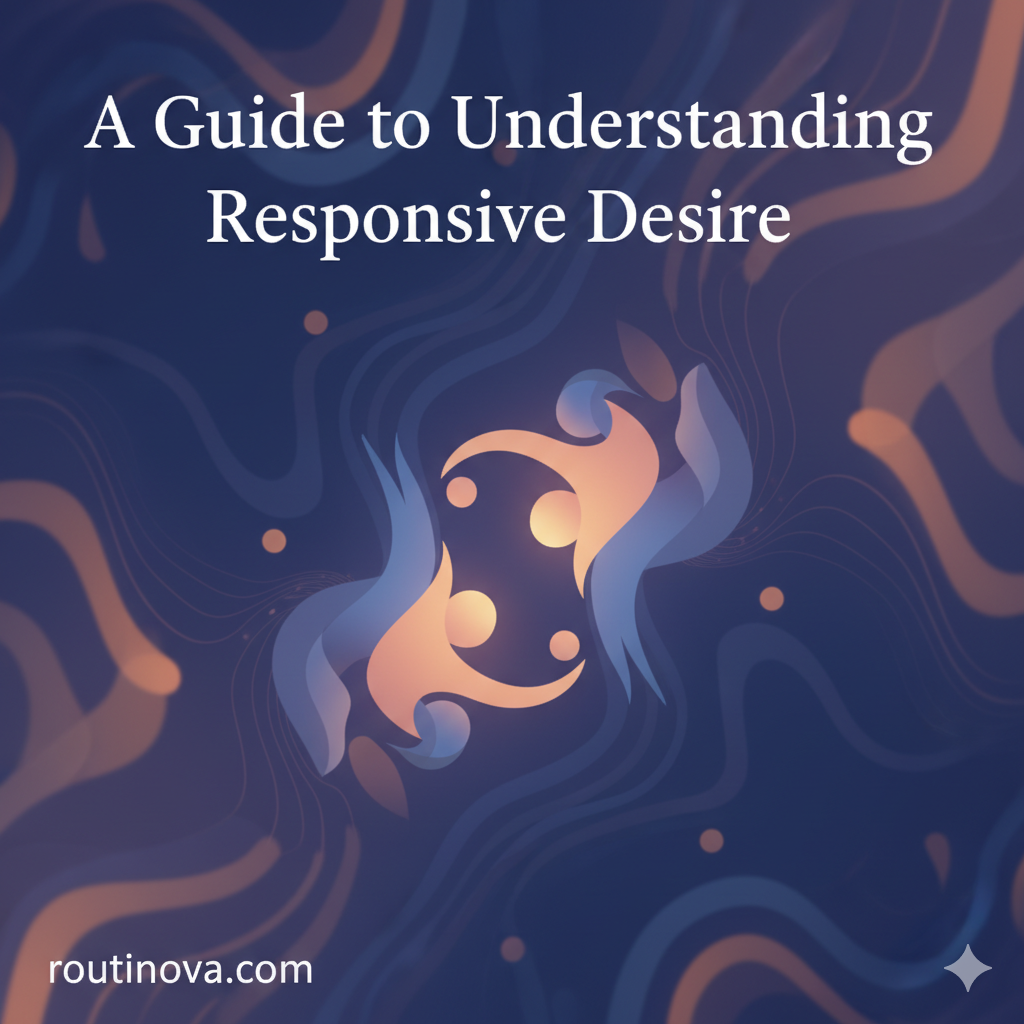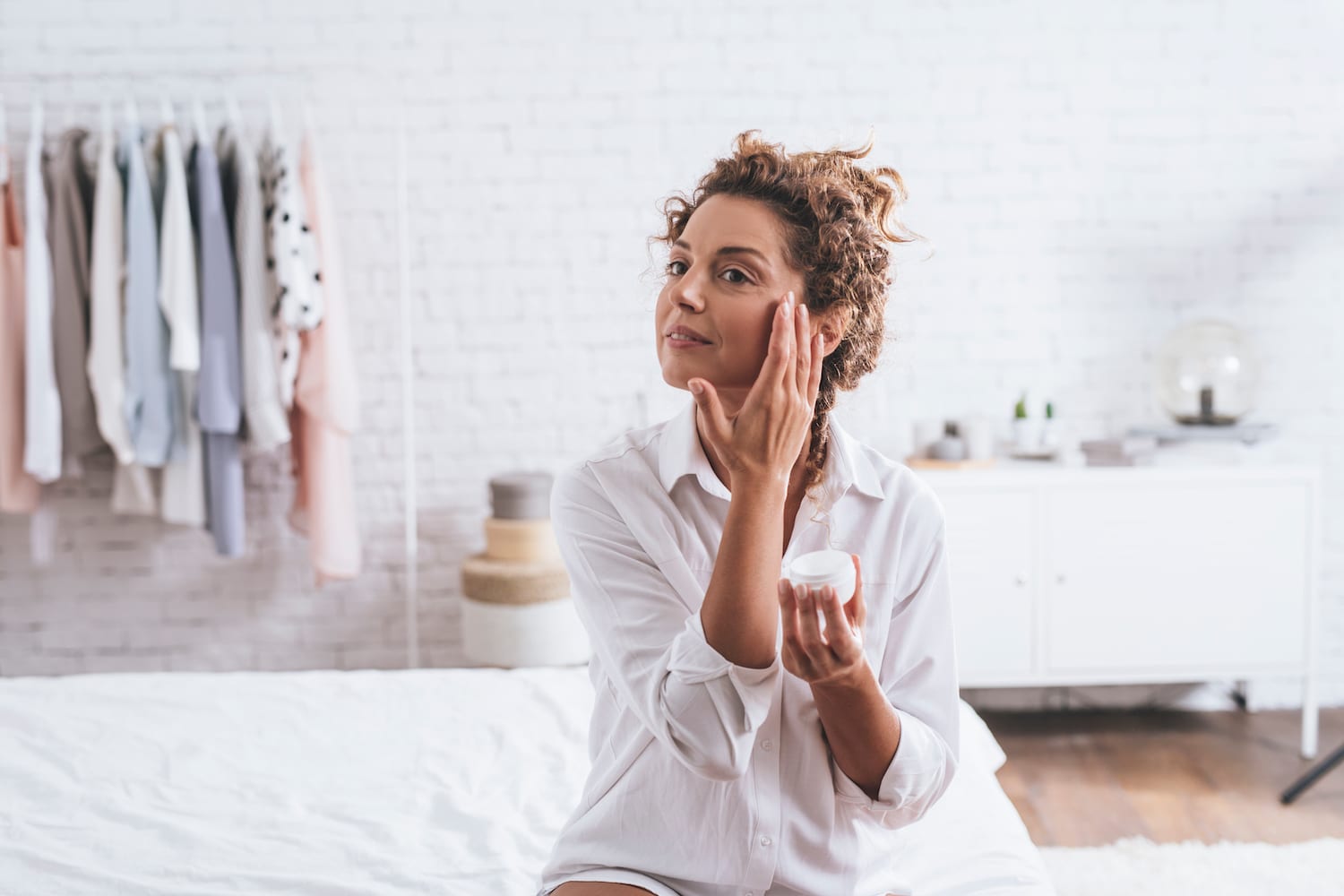Unlocking Your Libido: A Guide to Understanding Responsive Desire
Many individuals feel their libido is inconsistent, but a deeper understanding of responsive desire can transform their sex lives. Learn how your unique sexual blueprint works.

For years, I navigated a fluctuating libido, often feeling that my sexual drive was 'broken' or inconsistent. This self-perception, common among many, stemmed from a narrow view of sexual arousal. It wasn't until I began understanding responsive desire that I unlocked a more authentic and fulfilling connection to my sexuality. This revelation reshaped my perspective, moving from self-doubt to self-acceptance.
My journey highlights a critical truth: a healthy sex life isn't defined by constant, spontaneous urges. Instead, it’s a dynamic and deeply personal experience shaped by various factors, often emerging in response to specific contexts. This article, for Routinova readers, delves into the nuances of sexual desire, offering a fresh perspective for anyone who has ever questioned their own libido.
My sexual experiences often felt like a rollercoaster. During intense romantic connections, my desire would soar, leading to frequent and passionate encounters. Conversely, periods of singledom or unfulfilling dates left me feeling completely uninterested in sex, sometimes for months. This stark contrast made me wonder if something was inherently wrong with me, especially when friends easily pursued casual hookups. My early sex education, largely abstinence-only, provided no framework for understanding responsive desire or its variations. It left me, like many, relying on pop culture and peer experiences to define what a "normal" libido should look like – often a skewed and unhelpful benchmark.
This inconsistency, where desire seemed to vanish without a partner, was a source of quiet anxiety. I wasn't averse to sex; in fact, with the right person and connection, it was deeply enjoyable and fulfilling. However, the absence of an inherent, always-on sexual drive felt like a personal failing compared to the narrative of constant, spontaneous desire often portrayed. This common misconception, leading researchers at Stanford highlight, contributes to unnecessary distress for countless individuals grappling with their sexuality.
Beyond Spontaneous: Understanding Responsive Desire
The groundbreaking work of Emily Nagoski, PhD, particularly in her book "Come as You Are," provided the crucial insight I desperately needed. Her research illuminated that sexual desire manifests in two primary forms: spontaneous and responsive. Understanding responsive desire shifted my entire perspective. Spontaneous desire, often glorified in media, involves a sudden, unprompted surge of sexual interest. It’s the "wake up and want sex" scenario, where libido spikes without an apparent external trigger. Responsive desire, however, emerges in reaction to specific stimuli or contexts. This could be anything from a tender touch, a stimulating conversation, reading erotica, watching a captivating movie, or even a relaxing evening with a partner.
Shae Harmon, a COSRT-registered psychosexual and relationship therapist, explains that responsive desire is fundamentally "context led." It involves a gradual build-up of arousal, an exploration of what feels good, and a cultivation of an erotic environment. This might include flirtation, deep eye contact, self-care rituals, or sensual massage. For me, this meant acknowledging that my desire wasn't absent; it simply needed the right conditions to ignite. This realization was profoundly liberating, validating my experience as entirely normal and healthy. It's a key step in cultivating a more mindful and satisfying sex life.
Why Traditional Approaches to Desire Often Fail
Our societal narratives frequently promote a singular, often masculine-coded, model of spontaneous desire. This narrow view can lead many, especially women and those who don't fit conventional molds, to believe their libido is broken if it doesn't align. Traditional sex education often omits discussions of pleasure, desire, or the diverse ways humans experience arousal, leaving individuals ill-equipped to understand their own bodies. This absence of comprehensive information forces people to rely on anecdotal evidence or media portrayals, which are rarely accurate or inclusive.
The pressure to "fix" a low libido, or to conform to an ideal of constant sexual readiness, can lead to anxiety, shame, and a disconnect from one's authentic sexual self. Donna Oriowo, LICSW, CST, PhD, emphasizes that the cultural emphasis on spontaneous desire often overlooks the subtle stimuli that always precede arousal. "Every single time that you desire," she explains, "it's probably because you are actually responding to stimuli, internal or external." This means even what we perceive as spontaneous might, upon closer inspection, be a response to an unnoticed trigger or an internal shift. For example, a sudden craving for a favorite food isn't truly spontaneous; it's a response to internal hunger cues or external sensory triggers. The same applies to sexual desire. A sudden thought of a past intimate moment, or an unexpected sensual scent, can be the "stimulus" for what feels like spontaneous desire.
The Science Behind Responsive Desire: Expert Insights
Leading research consistently supports the spectrum of human sexual desire. A study published in The Journal of Sex Research (Hille et al., 2020) highlights the varied experiences of desire, including those who identify across the ace spectrum, further underscoring that there is no singular 'normal.' This scientific backing provides a strong foundation for understanding responsive desire as a natural and prevalent form of sexual expression.
Donna Oriowo, LICSW, CST, PhD, further elaborates on the pervasive nature of responsive desire. She suggests that what many label as "spontaneous" desire is often simply responsive desire where the initial stimuli are less conscious or immediately apparent. From an evolutionary perspective, human desire is deeply intertwined with environmental and relational cues. It's a complex interplay of hormones, psychological state, and external interactions. For instance, after starting an SSRI for anxiety, the author noted a decrease in spontaneous desire, yet responsive desire with a new, attractive partner remained strong (Jacobsen et al., 2015). This illustrates how context and connection can override other factors, bringing responsive desire to the forefront.
Uncovering Responsive Desire: Cultivating Your Unique Sexual Blueprint
Embracing understanding responsive desire means recognizing that your sexual drive is unique and valid. A healthy sex life isn't about meeting an external standard; it's about what brings you satisfaction and pleasure. This framework allows for a flexible and evolving relationship with your sexuality, acknowledging that desire can change throughout life due to circumstances, relationships, or even medication.
Kari Harrison, LCPC, CST, a sex therapist, highlights the importance of nurturing your sexual relationship with yourself, regardless of your desire type. For those with responsive desire, this involves actively learning about the specific "erotic contexts" that turn them on, and equally important, those that turn them off. This deep self-awareness forms the foundation for a fulfilling sexual life, whether solo or partnered. It's about designing your sexual experiences rather than passively waiting for desire to strike.
Nurturing Your Libido: Practical Steps for Responsive Individuals
Here’s a practical framework for cultivating your responsive desire and enhancing your overall sexual well-being:
Engage in Deep Self-Reflection:
- Identify Your Erotic Blueprint: What truly ignites your desire? Is it emotional intimacy, intellectual connection, specific physical sensations, a sense of safety, or perhaps creative expression? Keep a "desire journal" to note contexts, feelings, and activities that lead to arousal, both sexual and sensual. For example, some might find desire sparked by a challenging creative project or a deep philosophical conversation, not just explicit sexual cues.
- Recognize Your "Turn-Offs": Just as important as knowing what turns you on is understanding what dampens your desire. Stress, fatigue, unresolved conflict, or feeling rushed can be significant inhibitors.
Actively Create Erotic Contexts:
- Set the Mood: Don't wait for desire; create the conditions for it. This could mean scheduling time for intimacy, engaging in sensual activities like a warm bath with essential oils, listening to evocative music, or consuming erotica that resonates with your personal tastes.
- Sensory Engagement: Pay attention to all your senses. Soft lighting, appealing scents, comforting textures, and delicious tastes can all contribute to a heightened state of arousal.
- Mindful Connection: For partnered sex, prioritize quality time and emotional connection outside the bedroom. A strong emotional bond often serves as a powerful catalyst for responsive desire.
Communicate Effectively with Partners:
- Articulate Your Needs: Openly discuss your desire patterns and needs. Explain that your desire might need a "warm-up" period and what kinds of foreplay, activities, or conversations help you get there.
- Collaborate on Intimacy: Work together to design sexual experiences that honor both partners' desire types. This fosters mutual understanding and reduces pressure.
Prioritize Holistic Well-being:
- Stress Management: Chronic stress is a libido killer. Implement stress-reducing practices like meditation, yoga, or spending time in nature.
- Adequate Rest: Fatigue significantly impacts sexual energy. Ensure you are getting enough restorative sleep.
- Mental and Physical Health: Address any underlying mental health concerns (with a therapist, as recommended by leading health organizations) or physical health issues that might be affecting your desire. A healthy body and mind provide a more fertile ground for desire to emerge.
Navigating Desire: When to Seek Professional Support
While understanding responsive desire is empowering, it's also crucial to recognize when distress signals a need for professional support. If your experience of desire, whether responsive or spontaneous, causes you or your partner significant unhappiness, it’s a clear sign to seek help. This distress could manifest as persistent feelings of inadequacy, growing relationship conflict, or a pervasive lack of pleasure and satisfaction.
A qualified sex therapist can provide invaluable guidance in these situations. They can help you:
- Identify Underlying Factors: Explore potential medical, psychological, or relational issues impacting your desire. This might involve a referral to a medical doctor for hormone checks or medication review.
- Develop Communication Strategies: Learn how to express your needs, desires, and boundaries to your partner effectively, fostering deeper intimacy and mutual understanding.
- Explore New Erotic Contexts: Discover novel ways to stimulate and nurture your unique sexual blueprint, expanding your repertoire of pleasure.
- Manage Desire Discrepancy: Work through differences in desire levels or types within a relationship, helping both partners feel seen, heard, and satisfied.
- Reframe Expectations: Challenge ingrained societal or personal beliefs about sex and desire that may be causing distress.
Remember, seeking help is a proactive step towards a more fulfilling and harmonious sex life. It's about self-care and relationship health, not about "fixing" a broken part of yourself. Your sexual well-being is an integral part of your overall wellness.
Conclusion/Takeaways: My journey of understanding responsive desire transformed my relationship with my own sexuality. It taught me that there's no single "right" way to experience libido. Whether you predominantly experience responsive desire, spontaneous desire, or a blend of both, your experience is valid and normal. The key lies in self-awareness, acceptance, and actively cultivating the conditions that allow your unique desire to flourish. By shedding societal expectations and embracing your authentic sexual self, you can foster a sex life that is truly resonant and deeply satisfying. This continuous process of self-discovery and communication is the ultimate pathway to sexual empowerment.
About Ava Thompson
NASM-certified trainer and nutrition nerd who translates science into simple routines.
View all articles by Ava Thompson →Our content meets rigorous standards for accuracy, evidence-based research, and ethical guidelines. Learn more about our editorial process .
Get Weekly Insights
Join 10,000+ readers receiving actionable tips every Sunday.




